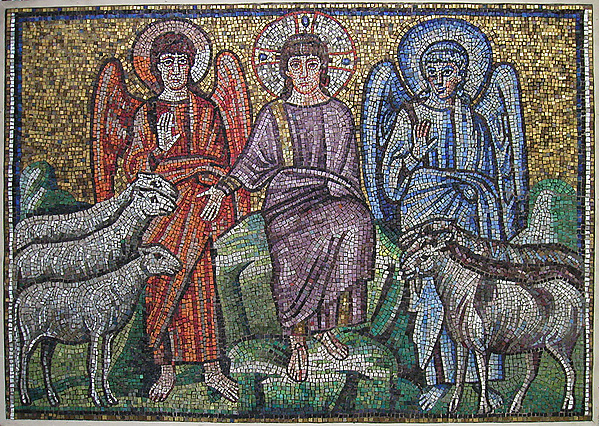If
my calculations are correct, you probably got your midterm research paper back
a couple weeks ago, and it was covered with red pen marks. With only four short
weeks left before your final paper is due, you’re wondering how you can improve
your writing to boost your grade for this last assignment. Below, I have listed
some of the most common mistakes you should look out for while editing your
paper. This is a lengthy post, with no pictures, but I promise it will be helpful for you art history students out there.
1. Using “WH” words outside of a
question
Who,
what, where, when, why, and how. In everyday conversation we say things like
“that is where I bought my watch” or “this is how you tie a shoe.”
However, in a formal paper, “wh” words should
only be used when posing a question. So, if this was a formal paper, that last
sentence would be a mistake. I could rephrase it as “…words should only be used
if posing a question.” I don’t bother making that edit here on the blog because
I want to have a conversational tone, but I would never (knowingly) submit a
paper with that mistake. Rewriting your sentences can seem tricky at first, but
you’ll figure out a way to rephrase. Instead of saying, “We do not know who
painted the still life,” say, “The artist of this still life is unknown.” Here’s
an example from one of my papers:
Mosaic art thrived even further in the
Byzantine Empire where Constantine
passed a law exempting mosaicists from taxation.
Mosaic art thrived even further in the
Byzantine Empire because of
Constantine’s law exempting mosaicists from taxation.
(Honestly,
this isn’t even the best sentence because the last half reads a little awkward.
I could have simply exchanged “where” for “because” and the sentence would have
read fine.)
2. Ubiquitous “they” or “it”
Research
papers are rooted in fact, so you want to be sure that you are getting that
fact across correctly. Phrases like “it is said” or “they believed” leave
things too open ended. Who says this? Who believes this? Art historians? The
culture? The artist? Even if you feel like you are being redundant, clarification
is always better. Let’s look at an example:
As Christian celebrations moved from the
catacombs to newly built churches, they
aimed to decorate their interiors with art that exuded permanence.
In
this sentence, “they” would be referring to “Christian celebrations” which
makes no sense because “celebrations” cannot aim to do anything. I probably
thought I was referring to Christians as a whole, but even that is false
because not every Christian had a say in church décor. Here is the correction:
As Christian celebrations moved from the
catacombs to newly built churches, the church
leaders aimed to decorate their interiors with art that exuded permanence.
Now
we know the specific decision makers behind church decorations.
Here’s
an example where “they” is ok:
Christian artists shared iconography
between Christ and the emperor so that the people would recognize his
sovereignty. With the strong tie of
church and state in Byzantium, some emperors even requested this similarity so they could identify with Christ,
creating a parallel between human and divine rulers.
“They”
is being used in the same sentence as “some emperors” so we already know the
specific group in question without having to reiterate it so closely.
3. Sentence Variation
In
trying to correct the previous edit, it is easy to fall into repetitive sentences.
You do not want to start every sentence with the same word, be it the artist’s
name, or more commonly the word “the.” Here’s an excerpt from my first research
paper:
The vertical depiction most accurately
resembles an antelope and typically has a small body, large head, and long
horns. The males are usually
attributed with the pierced mane like the male in this set. The lace-work mane is not for
decoration alone, but also has symbolic purposes. The zigzag pattern represents both the running pattern of the roan
antelope, and the path of the sun between the solstices. As a whole, the male
figure represents the sun. The
female figure is associated with the earth.
The dancers wear raffia
coverings in reference to water. The
unification of these three symbols conveys the three factors necessary for
fertility in both human reproduction and crop growth. The
human reproduction aspect is represented in the presence of the child on the
female’s back. The Chi Wara performance reflects the importance of cooperation
between male and female forces. The
“male” sun is believed to fertilize the “female” earth through man’s act of
farming.
Every
sentence (except for one) in this paragraph starts with “the.” Here’s how I
fixed it:
The vertical depiction most accurately
resembles an antelope and typically has a small body, large head, and long
horns. Males in the Segou style are usually carved with a pierced mane like the
male in this set. A lace-work mane is
not merely decorative, but also has symbolic purposes. The zigzag pattern represents both the running pattern of the roan
antelope, and the path of the sun between the solstices. As a whole, the male figure represents the
sun, while the female figure represents the earth. During rituals, the dancers
wear raffia coverings in reference to water. The unification of these symbols for sun, earth, and water conveys
the three elements necessary for fertility in both human reproduction and crop
growth. Human reproduction is
represented by the presence of the child on the female’s back. The Chi
Wara performance reflects the importance of cooperation between male and female
forces. The “male” sun is believed
to fertilize the “female” earth through man’s act of farming.
It’s
still not perfect, and I would definitely write it differently now, but 5
sentences starting with “the” is a huge improvement from 10 sentences. Making
these changes can be frustrating, but creative rewording will help improve your
variations. If the artist’s name is your issue, start by changing up your
noun/pronoun. Instead of “Caravaggio did…Caravaggio believed…Caravaggio
painted,” try “Caravaggio did… He believed… the artist painted.” Then mix up
your sentences more so they don’t have the same cadence and length every time.
4. Word Choice
My
biggest pitfall was always word choice. In trying to sound educated, or even in
just trying to add variety, I often used superfluous words which only
complicated my sentences. (Superfluous being a word that in itself is
superfluous.) If there is a simpler way to get your point across, use it. I
also used colloquial phrasing, which is ok in something like a blog, but not in
a formal paper. Unfortunately, this is not the kind of error I can find with a
simple ctrl+f in my papers, so I don’t have an example for you. But, I am sure
that there are plenty of websites with examples and corrections for syntax and
diction.
5. Expand on Subject-Specific Terms
After
doing loads and loads of research, it can be hard to remember that your reader
does not have all the background information that you have now. If you
introduce a term or concept that is not general knowledge,
be sure to take the time to define it
and explain its relevance. You don’t
need to delve into a whole new thesis, but give just enough clarification so
that your reader does not feel left out or confused. For example, in my
research paper on Indonesian shadow puppets, I referred to the puppeteers (dalangs) by male pronouns for the whole essay,
and even mentioned that it was a profession passed down from father to son.
But, I then quoted a female dalang,
which took my professor off guard. In my second paper, I spared a single
sentence to explain that with the recent growth of performance art schools, the
profession was becoming more accessible for woman. I didn’t digress into the
details of the whole article I had read about these new schools, but I did give
enough background to account for my sudden pronoun change.
6. Create a Plan of Action
So
you’ve written your paper and you are ready to edit, but you don’t know how to
catch all your mistakes. Everyone has a different technique, but until you
learn your best system, here are some suggestions:
·
Read through multiple times – focus on one
kind of edit for each read through
·
Read slowly and out loud so that you can
catch mistakes that your mind skips over
·
Read the essay sentence by sentence –
backwards (this will help you feel the rhythm of your sentences and to check
that each sentence is a complete idea on its own)
·
Be sure that every paragraph relates to your
thesis and is building towards a conclusion (even if your conclusion is that
your original thesis was wrong)
·
If you don’t understand your professor’s
edits (double prepositions – what are THOSE?!)
take the time to look them up and read several examples until you are sure
you know what to look for in your writing
BONUS TIP
Did
you know that “Xth century” is “Xth-century” when used as an adjective?
As
in: In the 16th century,
paintings were generally . . . vs. 16th-century
paintings generally featured. . .










